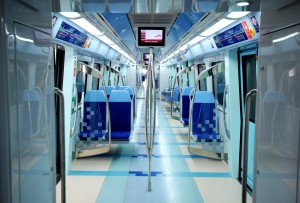Source: www.khaleejtimes.com
The public transport system in Dubai moved an average daily of 957,000 people in 2010, compared to the 800,000 figure in 2009, Roads and Transport Authority (RTA) said.

The number is likely to increase with the completion of the remaining Metro stations on the Red Line, and the operation of the Green Line, which will be completed on schedule in August.
Mattar Al Tayer, Chairman of the Board and Executive Director of the Roads & Transport Authority (RTA), said: “Targeting to realise multi-modal integration of mass transit systems as envisaged in the RTA Strategic Plan, which is aligned with the Dubai Strategic Plan (Infrastructure Sector) aimed at providing an integrated road and transport system that ensures smooth traffic flow and the highest levels of safety for all system users.”
RTA is making expeditious efforts to make the public transport means the ideal mobility choice for people in the Emirate.
He said the number of public bus users in 2010 clocked 113 million passengers with a daily ridership of about 314,000 passengers. The number of passengers using marine transit means, comprising abras and water bus, was about 15.35 million passengers with the abras ferrying about 42,000 passengers per day and the water bus transporting nearly 877 passengers per day.
“The Dubai Metro moved about 38.888 million passengers in 2010 and the average daily ridership of the Metro is currently hovering around 149,000 passengers and this number is poised to increase with the opening of the remaining Metro stations on the Red Line. The metro ridership is set to receive a big boost in the second half of this year with the operation of the Green Line,” he said. Last year, taxis in Dubai Emirate made about 225,500 trips per day serving about 451,000 passengers, and the total number of trips made by taxis in 2010 was about 82.3 million trips lifting about 164.7 million passengers.
“The huge investments pumped by the Government of Dubai to uplift the infrastructure of transportation sector has paid dividends and proved effective. The increase in the number of mass transit means users reflect an improvement in the culture of using public transport by all segments of the community, and the drive was particularly helped by the metro service,” he added.
“Using mass transportation has a host of benefits that include providing physical and psychological comfort to the user, minimising crashes, economizing on the fuel and maintenance costs of private vehicles and ridding the public from the hassles of finding parking spaces for their vehicles; which has become a challenge facing modern cities worldwide. Besides that, the use of public transportation effectively reduces environmental pollution resulting from the use of massive numbers of private vehicles; which triggers many ailments including respiratory system illnesses,” Al Tayer said.
















